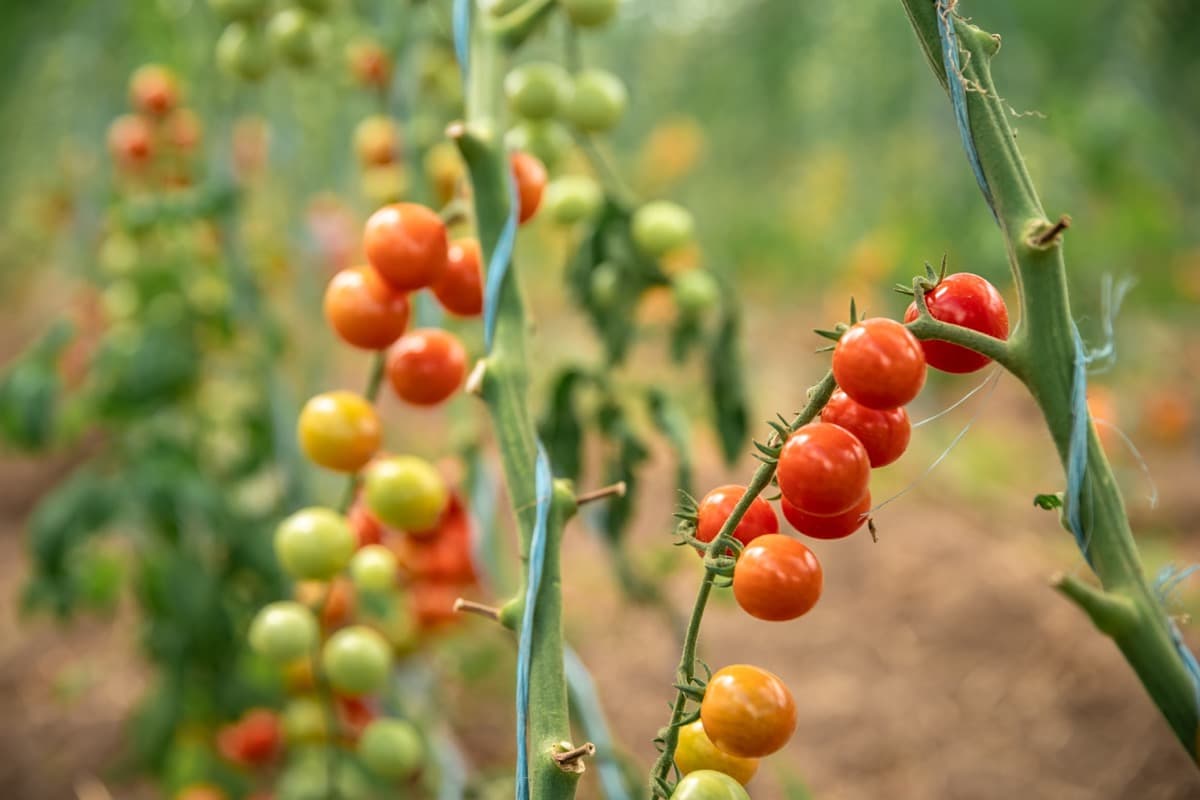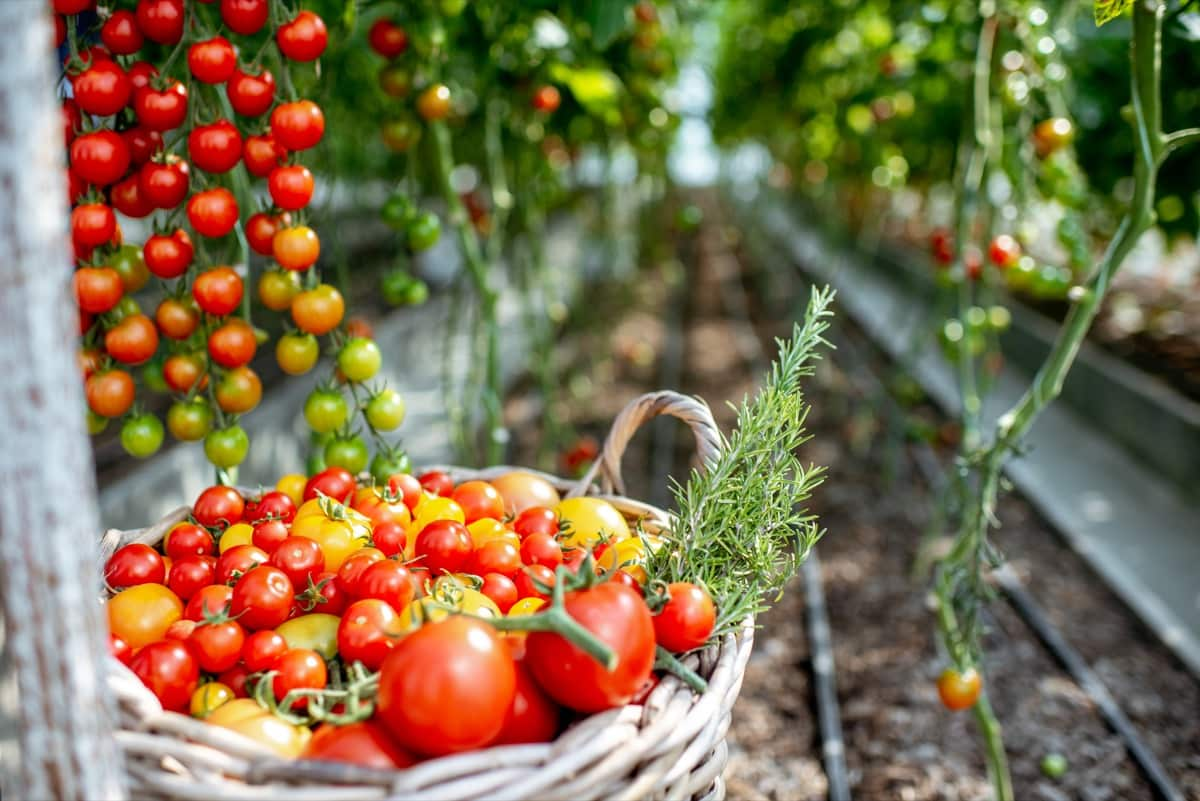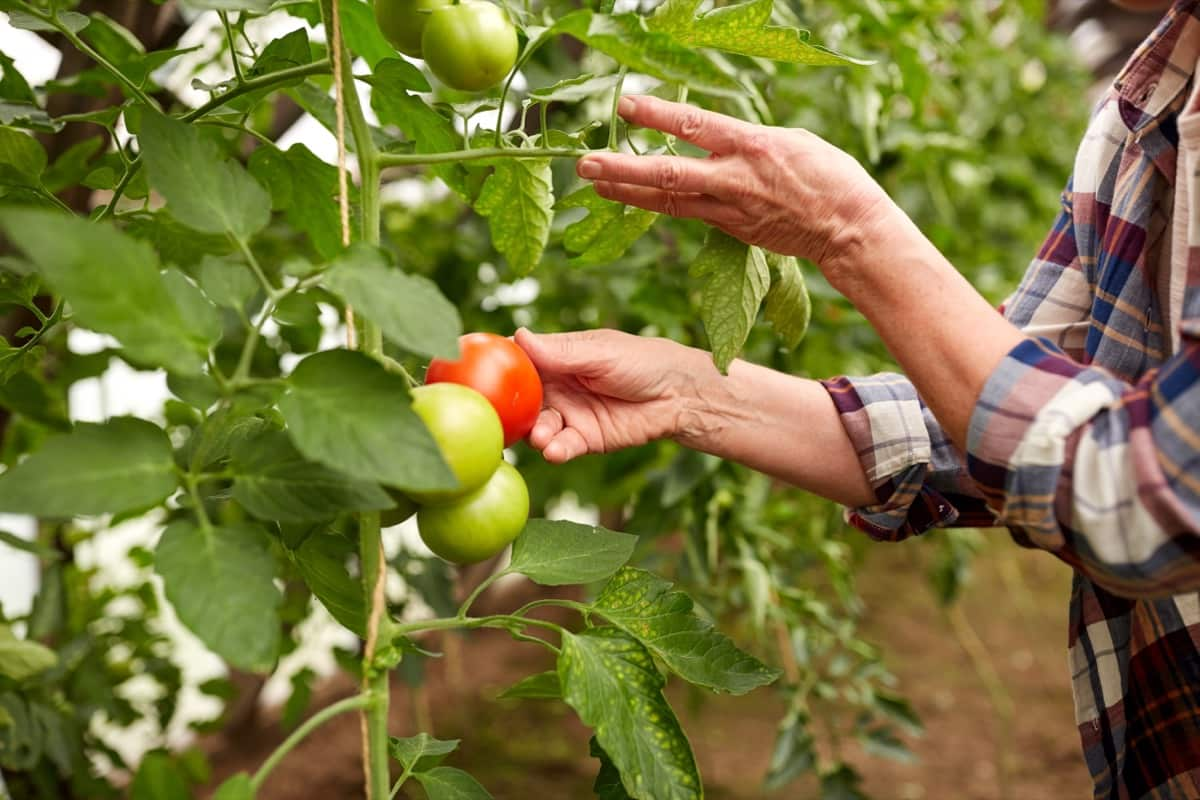Tomatoes are one of the world’s most widely grown and consumed crops, and Mexico is one of the largest producers of this fruit. Mexico is the world’s largest exporter of fresh tomatoes, with an industry valued at around $2 billion. This article will delve into the history of tomato farming in Mexico, the cultivation process, the challenges farmers face, and the impact of tomato farming on the country’s economy and society.

Tomato Farming in Mexico
History of Tomato Farming in Mexico
The history of tomato farming in Mexico dates back to pre-Columbian times when indigenous people cultivated the fruit. The tomato was an important part of Mesoamerican cuisine and was traded throughout the region. The indigenous people of Mesoamerica also believed that the tomato had medicinal properties and used it to treat various ailments. Tomatoes were famous in Europe after being introduced there from Mexico by the Spanish in the 16th century.
However, it took some time for tomatoes to gain widespread acceptance in other parts of the world. In fact, for many years, tomatoes were thought to be poisonous in some countries, including the United States. Tomato farming in Mexico became more organized and commercialized in the 20th century, with large-scale cultivation beginning in the 1960s. Today, the industry is dominated by large agribusinesses that export their products to global markets.
Cultivation Process
Tomatoes typically grow in Mexico between November and May, with the peak growing season between December and March. Most Mexico tomato farms are in Sinaloa, Jalisco, and Michoacán. These regions have ideal growing conditions, including fertile soil, warm temperatures, and sunlight. The cultivation process for tomatoes in Mexico begins with preparing the soil.
Farmers use tractors to plow and till the soil to ensure it is loose and aerated, which helps the plants grow strong roots. Once the soil is ready, farmers use irrigation systems to water the plants regularly. Tomato plants in Mexico are typically grown in greenhouses, which protect them from pests, diseases, and extreme weather conditions.
The greenhouses have ventilation systems that allow air circulation and temperature control. The plants are also regularly pruned to ensure they grow compactly and sturdily. This helps maximize each plant’s yield and ensures the fruit grows evenly. Once the tomatoes are ripe, they are harvested by hand or using machines. The fruit is then sorted and packed for transportation to markets and distribution centers.
Sustainable Farming Practices in Mexican Tomato Farming
As concerns about sustainability and environmental impact continue to grow, many tomato farmers in Mexico are adopting sustainable farming practices. This includes using organic fertilizers and pesticides, implementing crop rotation and cover cropping, and conserving water resources through drip irrigation and rainwater harvesting. Solar panels and windmills are just two examples of renewable energy sources many farmers are adopting to lessen their environmental impact. This not only reduces their impact on the environment but also helps to reduce operating costs in the long term.
Challenges Faced by Farmers
While tomato farming in Mexico is a lucrative industry, it has challenges. One of the most significant challenges farmers face is competition from other countries. Mexico’s primary export markets for tomatoes are the United States and Canada, which also have domestic tomato industries. This means that Mexican farmers must compete with domestic producers in these markets.
In case you missed it: Disease Resistant Tomatoes: List of Bacterial Wilt Resistant Varieties

Another challenge faced by Mexican tomato farmers is access to water. While the country has plenty of sunshine, it can also experience droughts, making it difficult to irrigate crops. Many farmers have turned to innovative water conservation techniques to overcome this challenge, such as drip irrigation and rainwater harvesting.
Finally, Mexican tomato farmers face pressure to keep their costs low while maintaining high-quality products. This can be challenging, as the industry is highly competitive, and farmers must balance the cost of labor, equipment, and materials with the market’s demands.
Impact on the Economy and Society
Tomato farming has a significant impact on the Mexican economy and society. According to the Mexican Ministry of Agriculture and Rural Development, the country produced over 3.3 million tons of tomatoes in recent years, with a value of over $2 billion. This makes tomatoes one of Mexico’s top agricultural exports. The industry also employs thousands of people on farms and supports industries such as transportation and distribution.
However, the tomato industry in Mexico has also faced criticism for its labor practices. Many tomato farms in the country rely on migrant workers, who often work long hours for low wages and have limited access to necessities such as healthcare and housing. Establishing worker-owned cooperatives and implementing fair labor practices are two recent initiatives aimed at bettering these people’s lives.
In addition to its economic impact, tomato farming has had a cultural impact on Mexico. Tomatoes are a key ingredient in many traditional Mexican dishes, and the fruit has a special place in the country’s culinary history. Tomato farming has also played a role in developing the country’s cuisine, as farmers have experimented with different varieties and growing techniques to produce high-quality products.
The Role of Technology in Tomato Farming in Mexico
Technology has played a critical role in developing the tomato farming industry in Mexico. Using modern equipment and machinery has helped increase efficiency and productivity on farms. At the same time, innovations such as drip irrigation and greenhouse farming have enabled farmers to conserve water and grow crops in a controlled environment.
Commercial tomato production has moved towards precision agriculture. This involves using sensors, GPS, and other technologies to monitor crops and optimize their growth. For example, sensors can measure soil moisture levels and alert farmers when irrigation is needed. In contrast, GPS can track the movement of farm equipment and optimize planting and harvesting schedules.
In case you missed it: How to Grow Greenhouse Tomatoes: A Step-By-Step Guide for Seed to Harvest

Conclusion
Tomato farming is a significant part of the Mexican economy and has a rich history. While the industry faces challenges such as competition from other countries and access to water, it remains an important contributor to the country’s agricultural exports. The industry has also had a cultural impact on Mexico, shaping the country’s cuisine and providing employment for thousands of people.
- Feed Your Flock for Less: Top 10 Tips to Save on Chicken Feed
- Ultimate Guide to Ossabaw Island Hog: Breeding, Raising, Diet, and Care
- Hatching Answers: The Top 10 Reasons Your Chickens Aren’t Laying Eggs
- Eggs and Economics: Breaking Down the Cost of Raising Backyard Chickens
- Defend Your Greens: Proven Methods to Keep Iguanas Out of Your Garden
- Ultimate Guide to Cinnamon Queen Chicken: A Comprehensive Guide for Beginners
- Ultimate Guide to California Tan Chicken: Breeding, Raising, Diet, Egg-Production and Care
- Ultimate Guide to Marsh Daisy Chicken: Breeding, Raising, Diet, and Care
- 10 Types of Chicken Farming Businesses You Can Start for Profits